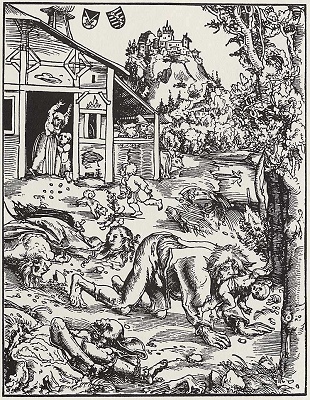|
Bram Stoker’s descendant has rejected reports that claimed his ancestor’s most famous creation, Count Dracula, hailed not from Transylvania but Devon.
Writer Andy Struthers told the Exeter Express and Echo last week about his theory that Stoker was inspired by the Exeter writer Sabine Baring-Gould’s texts Lycanthropy: the Study of Werewolves, and the vampire story Margery of Quether, adding: “People will be surprised and sometimes shocked by my findings, as most of what they now hold true will be proven to be false. It’s a bit like finding out who Father Christmas really is.”
Struthers, who will present his findings at the World Dracula Congress in Dublin this autumn, and who is looking for a publisher for his book Dracula Incarnate: Unearthing the Definitive Dracula, told the paper that “the book of werewolves and the vampire tale provided Stoker with elements of his story, and virtually everything he needed for the creation of his vampire Count, possibly including the voice of his vampire, which was female”.
Stoker’s decision to have his lawyer character Jonathan Harker leave for Transylvania from Exeter’s Cathedral Close was “included in the novel as a way of saying thank you to Baring-Gould, and the masses of material that he had provided the Irish author with”, added Struthers, because “Stoker was fond of tipping his hat to friends and acquaintances who had either helped him in researching his novel, or perhaps even inspired the characters within its pages”.
Struthers told the Guardian that he believes the reason his theory has been “hiding in the shadows” since Dracula was published in 1897 was because attention has focused on Emily Gerard’s work The Land Beyond the Forest, a the social history of Transylvania that includes details about the vampire myth.
“Gerard’s work was indeed indispensable to Stoker, but only regarding the detailing of Transylvania itself, as Stoker never went there,” said Struthers, pointing to Stoker’s rare interview with the British Weekly, in which he cites Baring-Gould as an inspiration.
“Nobody has ever really dug deep enough (pun intended) to find out who the count really was,” said Struthers. But he believes that “Baring-Gould’s work gave Stoker’s vampire his features” – although insisting that contrary to reports he did not say Dracula was from Exeter.
Sign up to our Bookmarks newsletter
Read more
Stoker’s great grand-nephew Dacre Stoker, author of the official Dracula sequel Dracula: the Undead and editor of a volume of Stoker’s forgotten writings, told the Guardian he agreed about the importance of Baring-Gould’s writing on his ancestor, but disputed the headlines which claimed Dracula hailed from Devon, not Transylvania.
“My radar goes up when someone says ‘Dracula was from here’. Dracula was not from Exeter, but part of his inspiration was,” said Dacre Stoker. He cited a rare interview Stoker gave with Jane Stoddard, where Stoker told Stoddard: “No one book that I know of will give you all the facts. I learned a good deal from E Gerard’s Essays on Roumanian Superstitions, which first appeared in the 19th century, and were afterwards published in a couple of volumes. I also learned something from Mr Baring-Gould’s Were-Wolves. Mr Gould has promised a book on vampires, but I do not know whether he has made any progress with it.”
“Everyone tries to find something a little bit new or different about Dracula, even now, 118 years after it was published, which is wonderful,” said Dacre Stoker. “But to me it is a bit of a stretch to argue that Dracula came from Exeter. To argue that Bram was influenced by Baring-Gould’s book on werewolves though - with that I completely agree.”
His ancestor, added Dacre Stoker, “was heavily influenced by many sources, and one of those was Baring-Gould … As you analyse Dracula, you see Bram has merged the vampire he’s created from folklore, but that he has also taken the concept of the werewolf in mythology from Baring-Gould, and merged it all together, also using Emily Gerard’s travel guide,” said Stoker. “Dracula is mostly vampire, but he has some werewolf characteristics – when he jumps of the ship in Whitby, Bram made him a big black dog, and then in London he turns into a wolf.”
“Bram was like a chef using ingredients from many places,” said Stoker. “And … we’re still speculating and guessing.”
|

